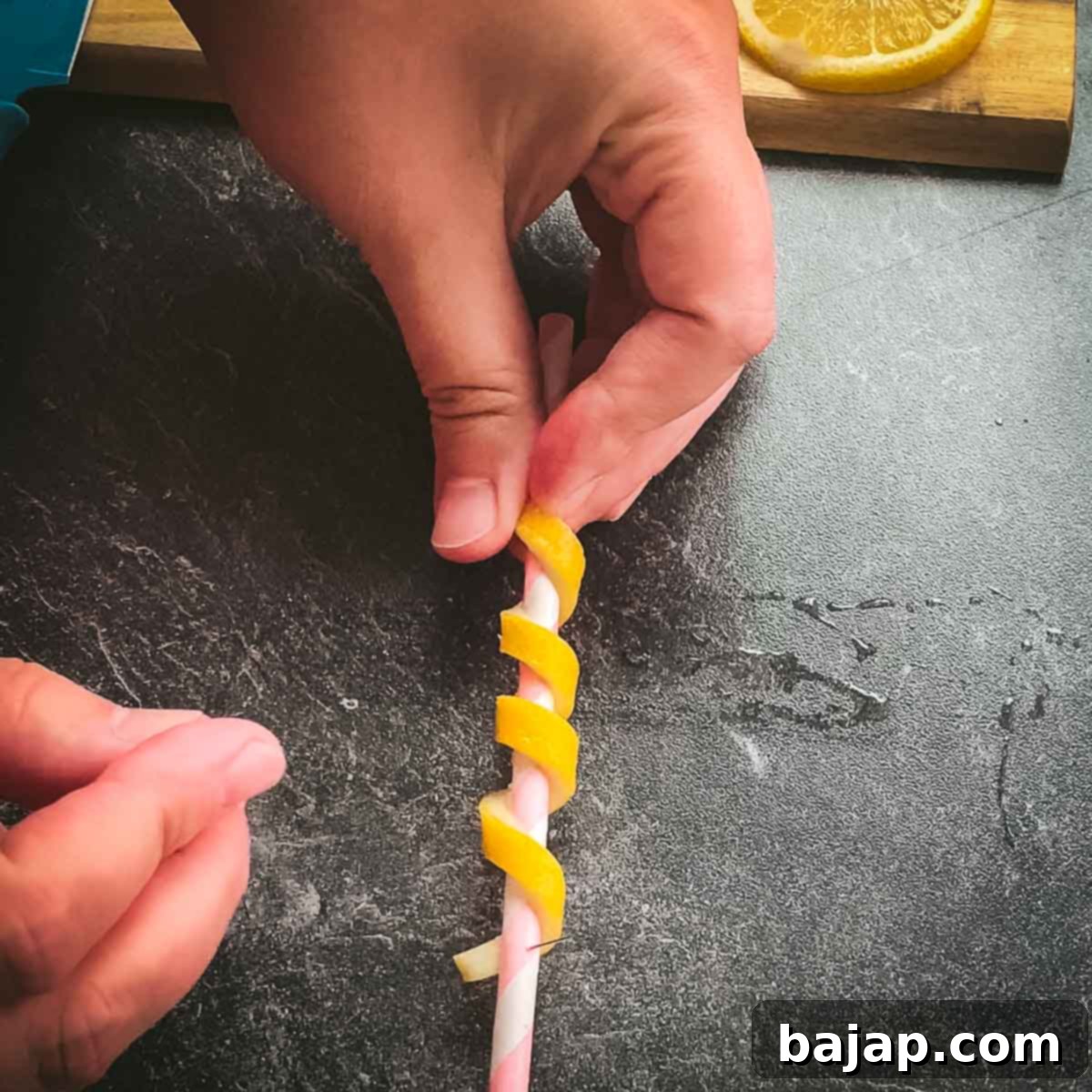How to Craft the Perfect Lemon Twist: An Essential Guide to Cocktail Garnishes
A beautifully crafted drink isn’t just about the liquids within; it’s an experience for all the senses. And for those who appreciate a touch of elegance in every sip, a perfectly executed **lemon twist** is an absolute game-changer. This simple yet sophisticated garnish adds a vibrant burst of citrus aroma, a hint of zesty flavor, and an undeniable visual appeal that elevates any beverage, from a classic martini to a refreshing seltzer. If you’ve ever admired the professional flair of a bartender and wished you could replicate it at home, you’re in luck! This comprehensive guide will walk you through the easy steps to master the art of making a flawless lemon twist, ensuring your drinks always have that extra bit of panache.

Beyond its aesthetic charm, a lemon twist plays a crucial role in the overall sensory profile of a drink. When expressed over a cocktail, the aromatic oils released from the lemon peel add a layer of complex fragrance that complements and enhances the other ingredients. It’s a subtle yet powerful contribution, transforming a good drink into an unforgettable one. So, ditch the ordinary and twist up your typical drink routine, literally! Grab a few fresh lemons, sharpen your tools, and get ready to learn the insider tips that will improve your garnish game, turning simple beverages into show-stopping cocktails!
Whether you’re hosting a dinner party, enjoying a quiet evening at home, or simply want to add a professional touch to your non-alcoholic refreshments, mastering the lemon twist is an invaluable skill. It’s a testament to the idea that sometimes, the smallest details make the biggest impact.
[feast_advanced_jump_to]
🍋 Why a Lemon Twist? Elevate Your Drinks
The lemon twist isn’t just a decoration; it’s an integral part of the cocktail experience. Here’s why this simple garnish is a must-have in your bartending repertoire:
- Aromatic Impact: The peel of a lemon contains concentrated oils that release a wonderfully fragrant zest when twisted or expressed. This aroma hits your nose before the drink even reaches your lips, enhancing the overall flavor profile.
- Visual Appeal: The bright yellow curl against the backdrop of a vibrant drink instantly signals freshness and quality. It adds a pop of color and an elegant, professional finish.
- Subtle Flavor Infusion: While not as dominant as lemon juice, the oils from the twist subtly infuse the drink, adding a fresh, slightly bitter, and acidic note that can perfectly balance sweeter cocktails.
- Versatility: Lemon twists complement an incredibly wide range of drinks, from classic gin and tonics and martinis to modern spritzers and even non-alcoholic sodas.
- Personal Touch: Crafting your own garnishes shows attention to detail and a passion for mixology, impressing guests and making every drink feel special.
🥘 Essential Ingredient: Fresh Lemons
For a perfect lemon twist, the star of the show is, unsurprisingly, the lemon itself. And when it comes to citrus garnishes, freshness is paramount. You only need one core ingredient:
- Lemons: Opt for fresh, bright, and juicy lemons. While you can use any variety of lemon, selecting a sizable fruit with a vivid, unblemished yellow color will make your garnish truly pop. Look for lemons that feel firm but have a slight give when gently squeezed, indicating juiciness. A smoother skin is generally easier to work with for peeling.
Choosing the Best Lemons:
- Look for Bright Yellow Skins: Avoid dull or green patches, which can indicate immaturity or lack of freshness.
- Smooth, Thick Skins: Lemons with slightly thicker, smoother skins are often easier to peel, yielding a more robust twist. Thin-skinned lemons can be more fragile.
- Organic (Optional but Recommended): Since you’ll be using the peel, organic lemons are a great choice to minimize exposure to pesticides. If using conventional lemons, ensure thorough washing.
- Heavy for their Size: A heavier lemon usually means it’s full of juice and, importantly, has a thick, oil-rich rind.
Storage Tips: This vibrant citrus fruit is best stored in the fridge’s crisper drawer after purchase. They can last for several weeks when stored correctly. Before using, always wash your lemons thoroughly under cold running water, and consider scrubbing them gently with a vegetable brush to remove any wax or residues, even if they’re organic.
🍸 Step-by-Step: Crafting Your Perfect Lemon Twist
Follow these detailed steps to create stunning lemon twists that will impress every time. Patience and a steady hand are key!
Step One: Prepare Your Lemon Slices
The foundation of a good lemon twist is a uniformly cut lemon slice. While a sharp knife can certainly work, a mandolin slicer is highly recommended for achieving consistent thinness. Set your mandolin to a medium-thin setting (about 1/8 to 1/4 inch thick). Carefully slice the entire lemon into rounds. This cutting method gives you a nice, even foundation to work with, minimizing waste and ensuring your twists are consistent in size and shape.
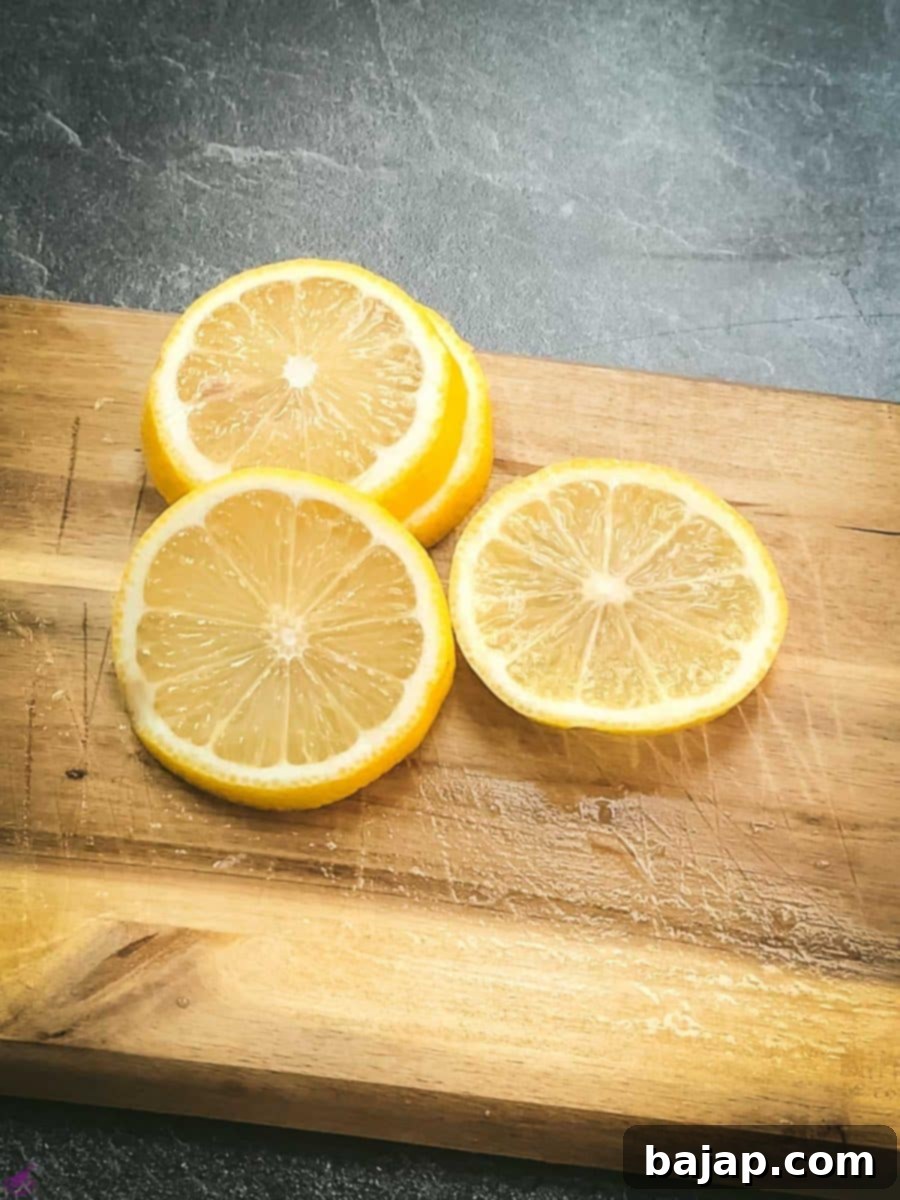

Step Two: Incise the Lemon Peel
Take one of your lemon slices. Using a small, sharp paring knife, make a small cut (about half an inch) from the edge towards the center of the slice, ensuring you do *not* cut all the way through the lemon. This initial cut will be your starting point. Next, carefully cut along the inner edge of the lemon peel, separating it from the fleshy fruit. The goal is to remove as much of the white pith as possible, as it can be quite bitter. Glide your knife between the yellow zest and the white pith, aiming for a clean separation while keeping the peel intact. A gentle touch is essential here to avoid tearing.
Step Three: Separate the Peel
Starting at the cut you made in Step Two, continue to either carefully cut the entire round of lemon peel away from the fruit, or gently tear it off. For a cleaner, more professional look and to prevent frayed edges, cutting is generally preferred over tearing. Aim for a continuous strip of zest, free from any major white pith if possible. This strip should be relatively uniform in width around the circumference.
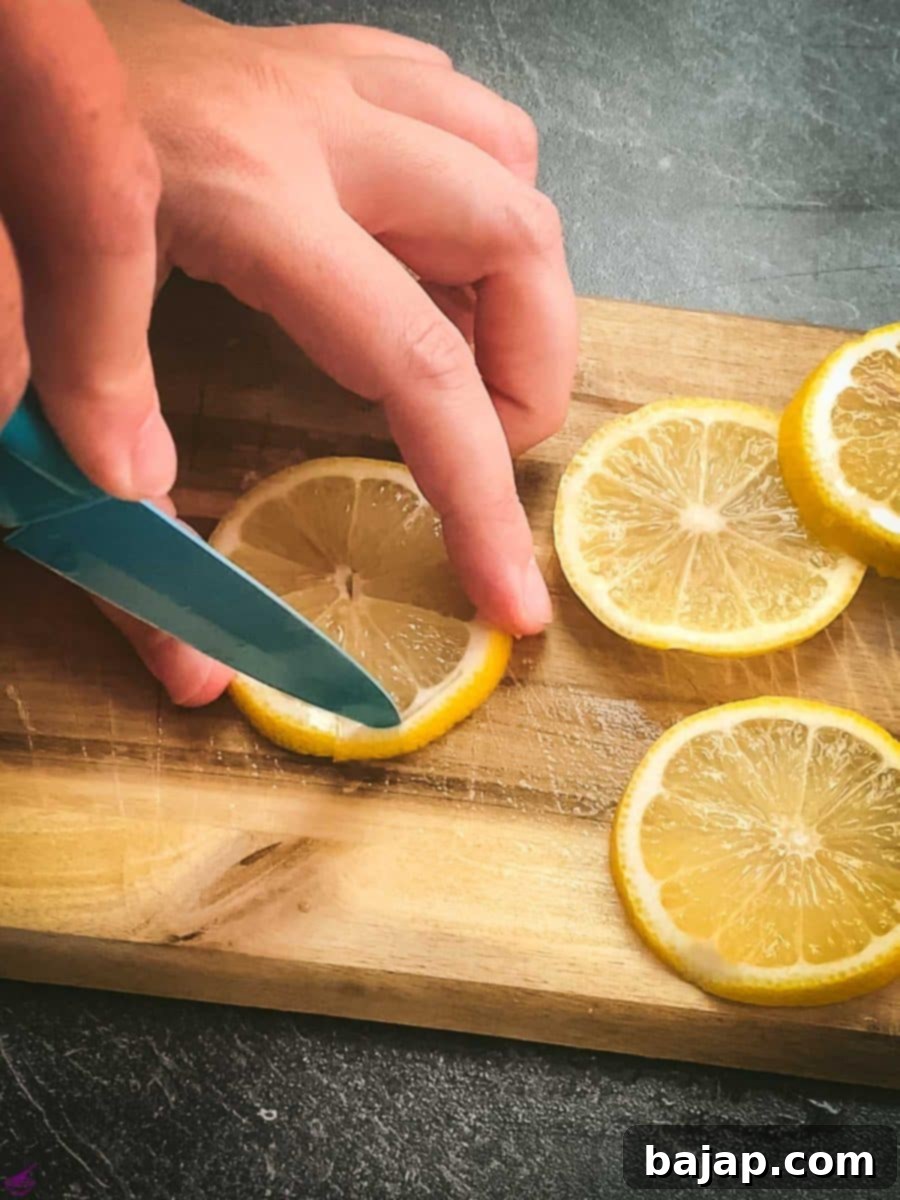
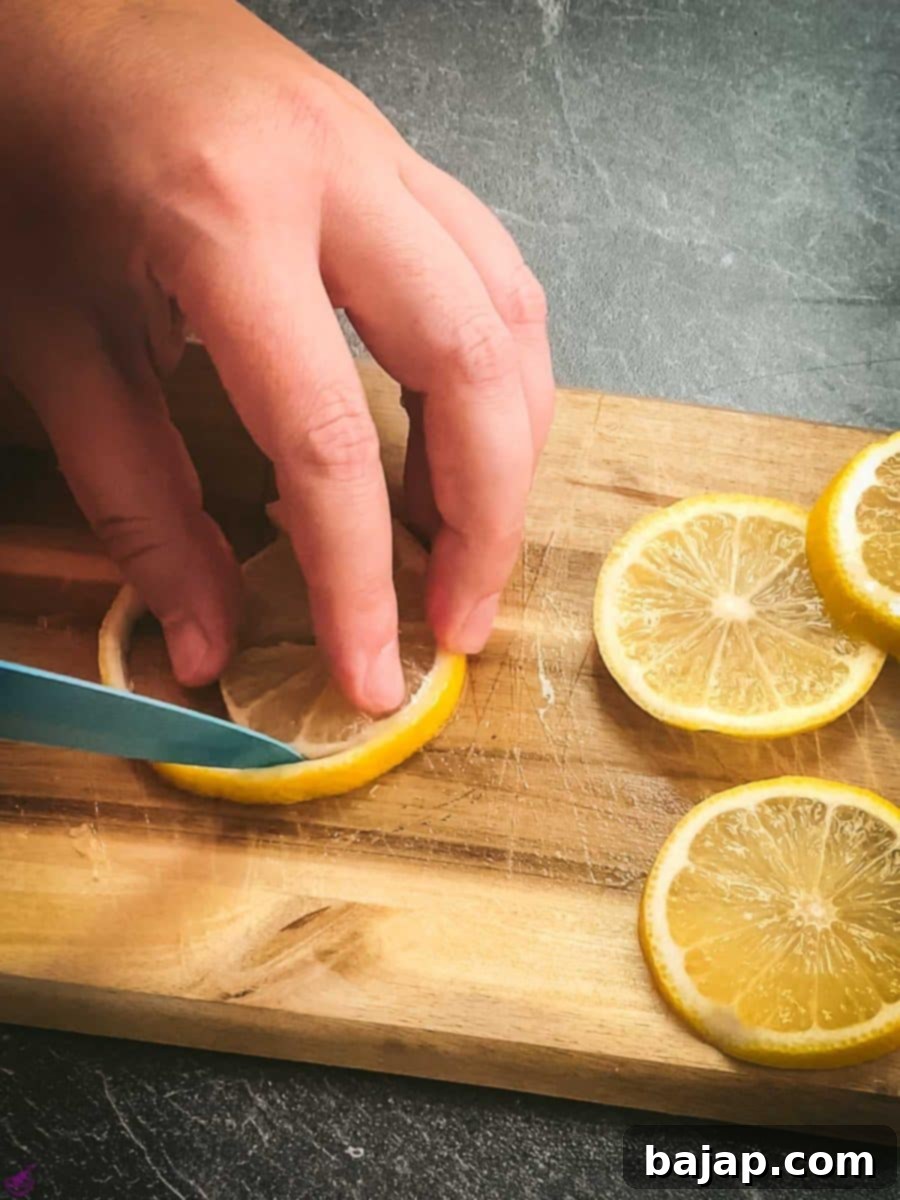
Step Four: Shape Your Twist
Now for the “twist”! Take your strip of lemon peel. Quickly and firmly wrap it tightly around a thin object. A paper straw is ideal due to its consistent shape, but you can also use a reusable straw, a bar spoon handle, a skewer, or even your finger if you’re quick. The key is to wrap it snugly to encourage a tight coil. Once wrapped, use small pins (like clean sewing pins or cocktail pins) to secure the ends, holding the peel in its coiled shape. This step is crucial for “setting” the twist.
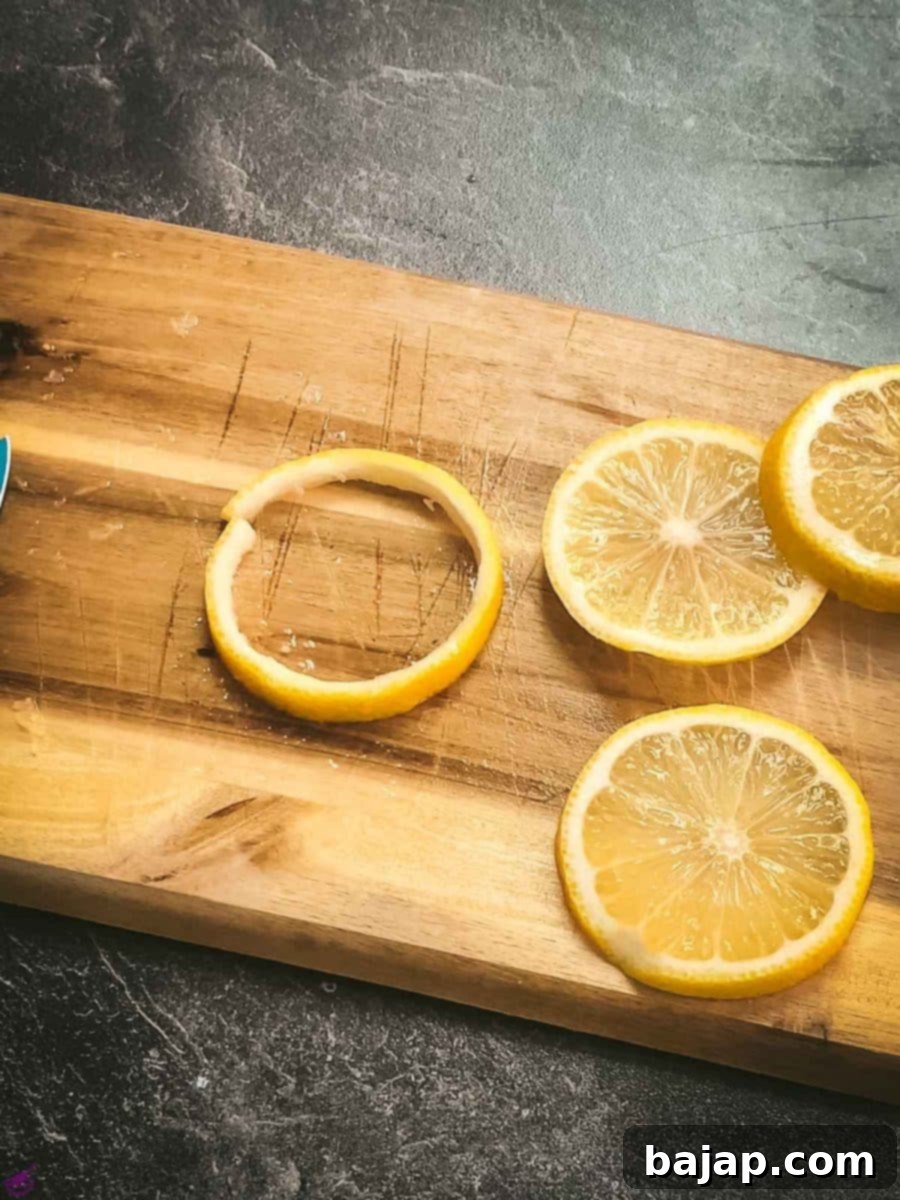
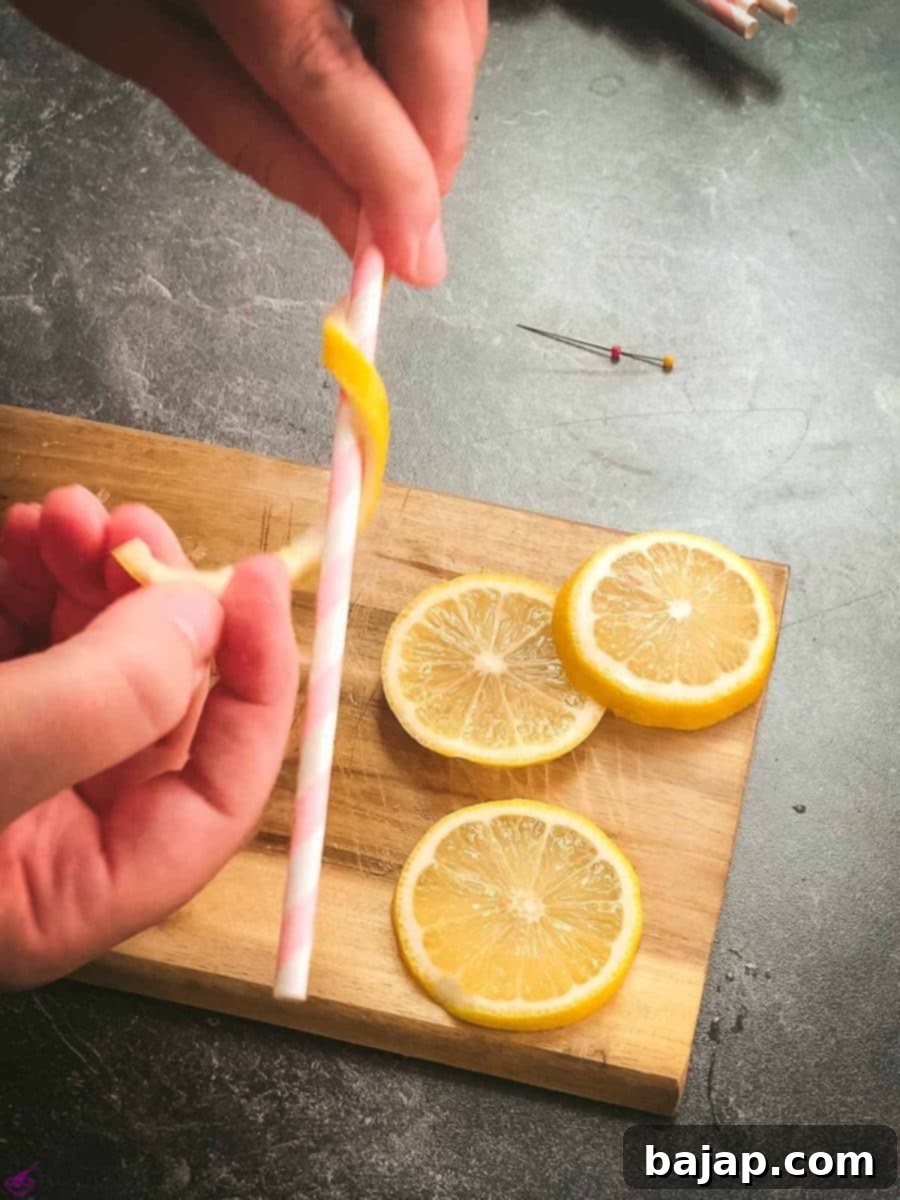
Step Five: Set the Shape and Garnish
Leave the lemon twist wrapped around the straw and secured with pins while you mix your cocktail. A few minutes is usually enough for the natural oils and structure of the peel to “set” into the desired curly shape. Once your drink is ready, gently remove the pins and the straw. You should have a beautifully coiled lemon twist. Before placing it in the drink, give the twist a gentle squeeze over the glass to release those fragrant essential oils, then place it elegantly on the rim or directly into the drink. Voilà! A perfect lemon twist, ready to impress.
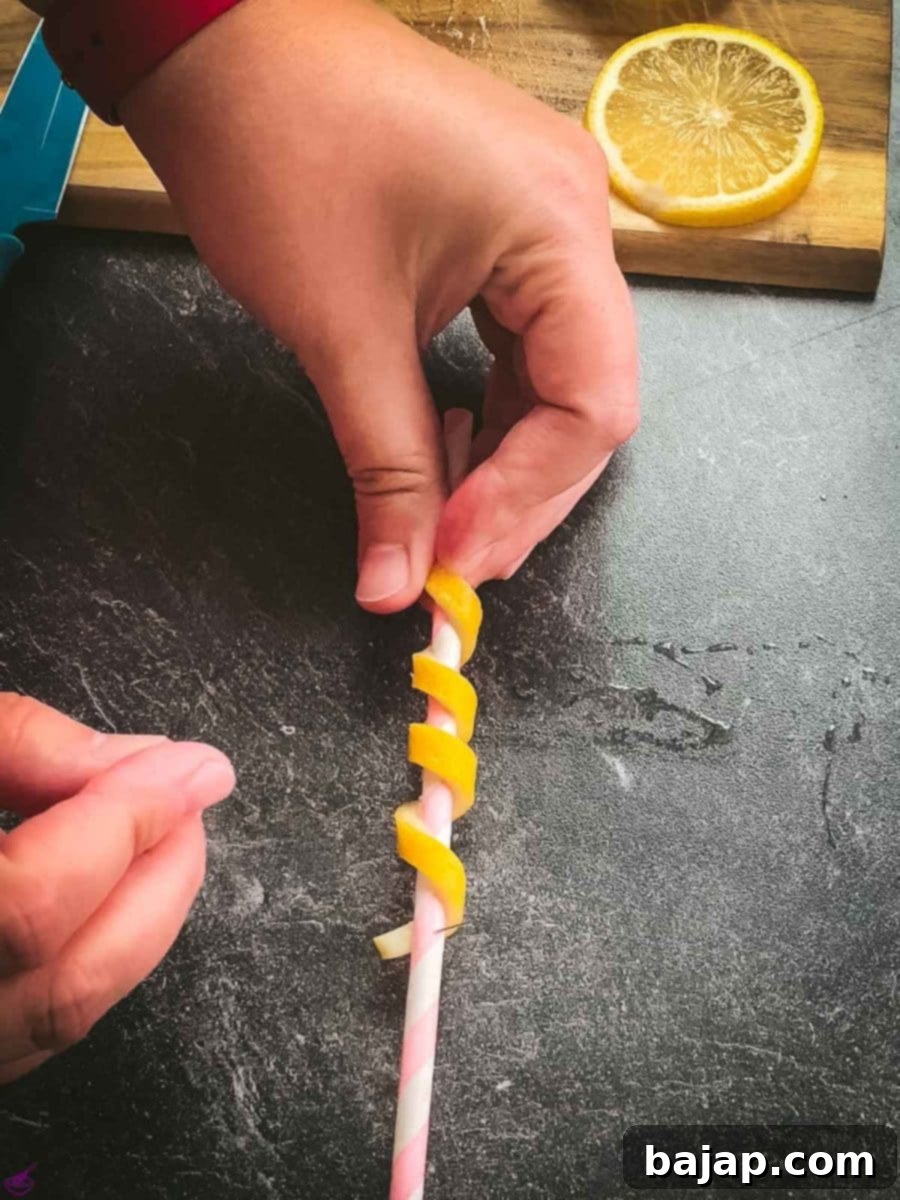
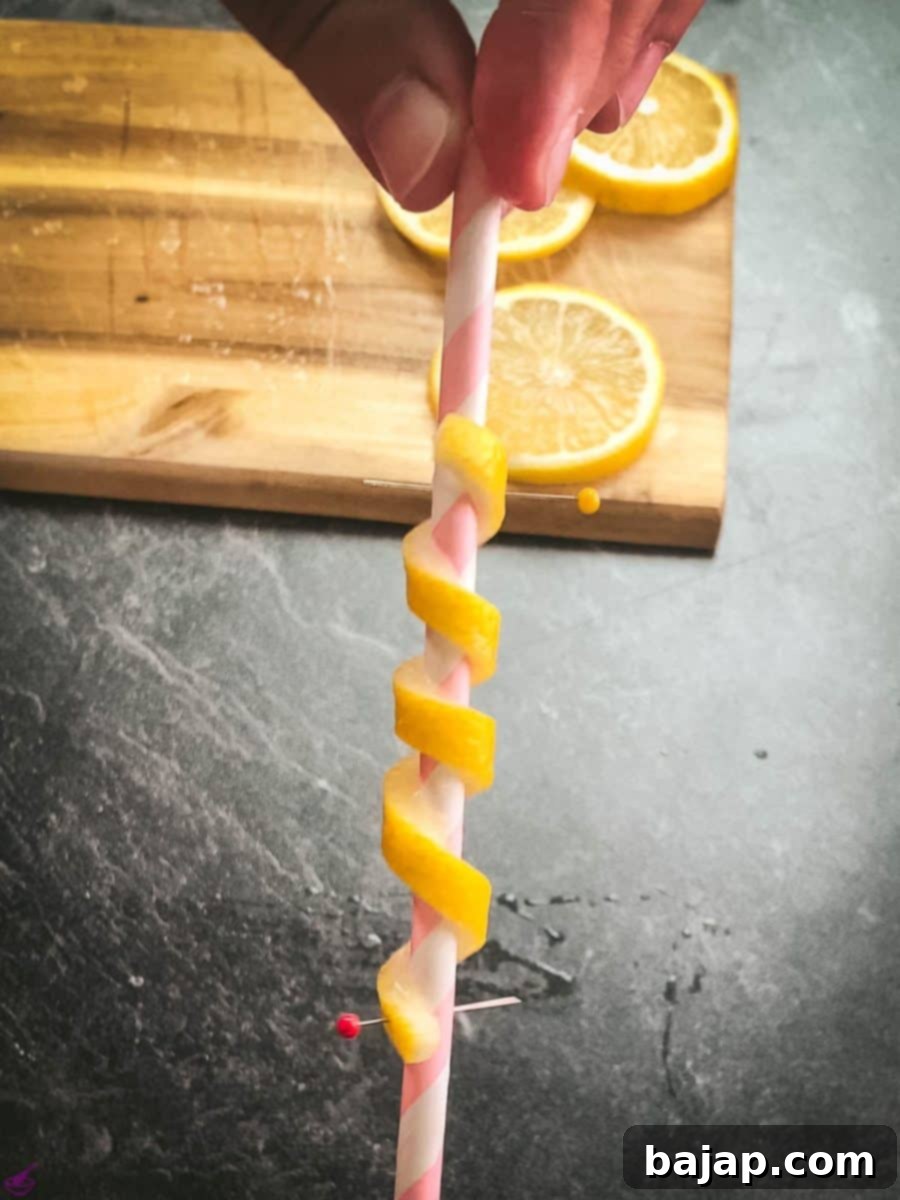

🍸 Variations and Creative Twists
While the classic lemon twist is always a winner, don’t be afraid to experiment with other citrus fruits or even different shapes to add unique flair to your drinks:
- Orange Twists: For a sweeter, more aromatic garnish, try using an orange peel. The vibrant color and sweeter oils are fantastic in whiskey-based cocktails like an Old Fashioned or a seasonal mulled wine.
- Lime Twists: A sharper, more pungent aroma perfect for gin and tonics, margaritas, or any drink needing an extra zesty kick.
- Grapefruit Twists: For a sophisticated, slightly bitter, and highly aromatic garnish, grapefruit peel is an excellent choice, especially with gin or tequila.
- Mixed Citrus: Create a “rainbow twist” by combining different citrus peels on a single straw for a truly eye-catching presentation.
- Herb-Infused Twists: For an added layer of flavor and aroma, gently press fresh herb leaves (like mint, basil, or rosemary) onto the sticky side of your citrus peel before twisting. The oils from both will mingle beautifully.
- Decorative Cuts: Instead of a simple strip, use a channel knife to create a continuous, thin spiral. Or, for a simpler approach, use a vegetable peeler to get broader strips that can be loosely coiled or folded.
🍽 Essential Equipment for Perfect Twists
Having the right tools can make all the difference in achieving a professional-looking lemon twist. Here’s what you’ll need:
- Mandolin Slicer: This is your secret weapon for consistently thin, uniform lemon slices. It ensures that each twist has a similar texture and appearance. If you do not have one, you can carefully cut the lemons using a very sharp chef’s knife or a vegetable peeler instead, though consistency may vary.
- Sharp Paring Knife: A small, sharp paring knife is the perfect choice for separating the peel from the fruit and removing any excess pith. Its precision allows for clean cuts, crucial for a refined look.
- Pins: Small, clean pins (such as sewing pins or specialized cocktail pins) are essential for holding the lemon peel in its curly shape while it sets. Ensure they are clean and food-safe if they will touch the peel directly.
- Paper Straw: A straw is the ideal cylindrical shape to create a nice, tight coil for your twist. Paper straws are convenient, but a reusable metal or plastic straw also works perfectly. The key is a consistent, relatively thin diameter.
- Cutting Board: Always use a clean, stable cutting board. A separate board for citrus can help prevent cross-contamination of flavors, especially if you’re also preparing other ingredients.
- Channel Knife (Optional, but Recommended): For those looking to create long, elegant spirals of zest with minimal pith, a channel knife is a fantastic specialized tool. It quickly carves a thin, continuous strip of zest directly from the lemon.
💭 Top Tip: For a Flawless Twist
The secret to a truly refined lemon twist lies in its clean edges. Be careful not to tear the edges of the peel when separating it from the fruit or shaping it. A frayed or jagged peel instantly diminishes the elegant, refined look of a lovely lemon twist. That’s why I strongly prefer to carefully cut the peel off with a sharp knife rather than attempting to tear it. A clean, smooth cut ensures a professional finish every time and makes the twist more robust.
Pro-Tips for Success:
- Warm Your Lemons: Before slicing, roll the lemon firmly on a countertop for a few seconds. This helps release the essential oils and makes the fruit softer, which can result in a more pliable peel.
- Minimal Pith: While a little pith is unavoidable, aim to remove as much of the bitter white layer as possible. This ensures your garnish only adds bright citrus notes, not bitterness.
- Practice Makes Perfect: Don’t get discouraged if your first few twists aren’t perfect. Like any skill, practice will improve your technique and speed.
- Freshness is Key: Always use fresh lemons. Older lemons tend to have drier, less pliable peels that are prone to cracking.
🙋🏻 FAQ: Frequently Asked Questions
Lemon twists are incredibly versatile and can brighten up so many creative concoctions! A twist is the perfect garnish for classic cocktails like martinis, cosmopolitans, whisky sours, gin and tonics, and mules. They’re also fantastic in effervescent drinks like Aperol Spritzes, Prosecco, champagne, and even simple vodka sodas. Their aromatic oils complement a wide range of spirits and mixers, adding both visual appeal and a layer of zesty fragrance.
Absolutely! Lemon twists are not just for alcoholic beverages. They look equally stunning and add a wonderful aroma to non-alcoholic drinks such as lemon-lime soda, tonic water, sparkling water, seltzer, homemade lemonade, or even a glass of iced tea. It’s an easy way to make any drink feel more special and sophisticated without adding alcohol.
All you need for a twist is the citrus skin, so you’ll have plenty of fruity flesh left over! Don’t let it go to waste. Use the juice in your drinks, cocktails, or baked goods like pies, cakes, or custards. Add the fresh lemon segments to smoothies and juices for a healthy boost. You can also freeze the juice in ice cube trays for future use, or use the remaining lemon halves to make infused water. If you’re not going to use the remaining lemon right away, wrap it tightly in plastic wrap or store it in an airtight container in the fridge to maintain freshness for a few days.
Yes, you can! To prepare them ahead of time, follow all the steps up to shaping and setting the twists on the straws. Once they’ve held their shape (after about 5-10 minutes), carefully remove the pins and straws. Store the coiled twists in an airtight container in the refrigerator for up to 24 hours. For longer storage, you can gently place them in a single layer on a plate and freeze them. Once frozen solid, transfer them to a freezer-safe bag. They can be stored for up to a week this way, though their aromatic potency might slightly diminish over time.
A channel knife is a specialized bar tool designed to cut thin, continuous strips of citrus zest with very little pith. It has a small, V-shaped blade that “channels” out the zest. To use it for a twist, simply hold the lemon firmly and draw the channel knife around the circumference of the fruit, applying even pressure. This will create a long, elegant spiral of zest that can then be coiled around a straw or spoon handle to form a perfect twist. It’s an excellent tool for consistency and speed, especially if you make many cocktails.
Other Refreshing Recipes for You to Try
If you’re looking to expand your drink-making skills and find more delicious concoctions to pair with your newfound lemon twist expertise, explore these other fantastic recipes:
- Vanilla Vodka Tonic: A Sweet & Smooth Twist on a Classic
- The Complete Guide to Gin & Tonic: Crafting Your Perfect G&T
- Your Complete Guide to Freshly Squeezed Lemon Juice: Essential for Cocktails & Cooking
- Refreshing Cucumber Gin and Tonic: A Garden-Fresh Delight
- Immune Boosting Saffron Water: A Luxurious & Healthy Infusion
- Classic Gin and Tonic with Lemon: Simple, Crisp, and Timeless
- How to Make a Snowball Cocktail: A Festive & Creamy Treat
- Vanilla Vodka Sidecar: A Smooth and Elegant Cocktail Variation
- Refreshing Lavender Daiquiri: A Floral Twist on a Classic
- Spooky Red Halloween Cocktail: Perfect for Your Next Fright Night!
If you make this recipe, let me know how you liked it by giving it a ★★★★★ star rating and leaving a comment below. This would be awesome! Your feedback helps others discover and enjoy these recipes. You can also sign up for our Newsletter to get the latest tips and recipes directly in your inbox, or follow me on Pinterest or Instagram and share your creation with me. Just tag me @combinegoodflavors and hashtag #combinegoodflavors, so I don’t miss your beautiful work!
🤎 You Might Also Like These Citrus-Inspired Delights
If you love the bright, zesty flavors of lemon, you’ll surely enjoy these other recipes that celebrate this incredible citrus fruit:
- No Bake Lemon Cheesecake with Blueberry Sauce
- Lemon White Chocolate Chip Cookies
- Yummy 40 Yellow-Colored Cocktail and Drink Recipes
- How to make a Refreshing Strawberry Spritz Cocktail
⛑️ Food Safety for Garnishes
While often overlooked, food safety is just as important when preparing garnishes as it is for the main dish. Keep these guidelines in mind:
- Wash All Produce: Always thoroughly wash fresh fruits and vegetables, including lemons, under running water, even if you plan to peel them. Use a clean vegetable brush for extra scrubbing, especially if using non-organic produce.
- Clean Hands & Surfaces: Wash your hands with soap and water before and after handling produce. Ensure your cutting board, knives, and any other equipment are clean.
- Separate Boards: If you’re also handling raw meat or poultry in your kitchen, use separate cutting boards for produce to prevent cross-contamination.
- Discard Bruised or Moldy Produce: Never use parts of fruit that are bruised, discolored, or show any signs of mold, even if you’re only using the peel.
- Freshness Matters: Use fresh, firm lemons. Overripe or spoiled fruit can harbor bacteria and won’t yield good quality zest.
- Proper Storage: Store fresh lemons in the refrigerator to maximize their shelf life and maintain quality.
- Safe Pins: If using pins, ensure they are clean and ideally designated for food use. Avoid rusty or dirty pins.
For further comprehensive information on safe food handling, please check Safe Food Handling – FDA.
